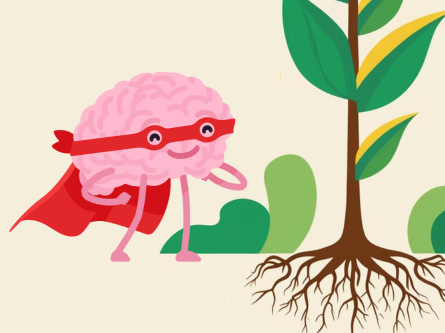To better understand what belonging and inclusion mean, first, we need to understand and develop a “growth mindset”.
What is a growth mindset?
A growth mindset acknowledges the potential of others, values effort and maintains an openness to learning new ideas and perspectives. In both personal and professional settings, adopting a growth mindset can lead to deeper understanding and engagement in fostering inclusive spaces where people feel like they belong to achieve collective success.
Psychologist Carol Dweck, coined the term “growth mindset” as a belief that abilities and intelligence can be developed through effort, continuous learning, and perseverance. A “fixed mindset” means that qualities such as intelligence or talent are static and cannot change. When it comes to belonging and inclusion, adopting a growth mindset means recognizing that, regardless of one's background or current understanding, everyone has the ability to grow in their knowledge of and acceptance of people different than ourselves, with different life experiences and perspectives.
How can we use a growth mindset to better understand what belonging and inclusion mean?
With a growth mindset, individuals can understand the meaning behind diversity as an opportunity for viewing differences as sources of learning and growth rather than obstacles. This helps us let go of the notion that diversity divides or segregates people. Instead, it helps us to see that diverse viewpoints can be a source of strength and creativity. In a workplace, a growth mindset can lead to greater creativity, problem-solving, and overall team success when diverse viewpoints are welcomed and applied.
Belonging is the general sense that we are a valued part of a group1. Experiencing belonging means we feel welcomed, our authentic self is appreciated, and we’re part of something larger than ourselves. Indeed, belonging is a profound human need—one that transcends professional settings and impacts personal relationships as well. A lack of belonging—feeling exclusion, rejection, or loneliness—takes a significant toll. Worries about belonging take up mental energy and have negative, measurable consequences on health, learning, and performance. In contrast, when belonging is present, studies have found improvement in health outcomes, students earn better grades, and employees engagement and performance increase.
Belonging and inclusion then involves creating environments where everyone feels they can exist as their authentic selves knowing that their viewpoints and very being are valued, and where they have equal access to opportunities. For inclusion to thrive, individuals must understand that access is not always equal by default and that barriers—whether intentional or unintentional—exist. Those with a growth mindset approach inclusion with a spirit of curiosity and empathy. They are willing to confront uncomfortable truths, advocate for strangers, and understand that inclusion is not a one-time effort but an ongoing process of adaptation and learning.
A building block of belonging and inclusion is equity, or health equity here at UC Davis Health. In the context of belonging and inclusion, this simply means fairness and access for everyone. Those with a growth mindset are more likely to recognize the need for equity and be willing to engage in the process of creating a fairer environment. This might involve advocating for change while acknowledging that mistakes along the way are a natural part of growth, or simply acknowledging that not everyone begins at the same starting point. We encourage you to challenge yourself by leaning into a growth mindset and observe how it may influence belonging and inclusion for the people around you.
Resources
- [Watch] "Developing and Embracing a Growth Mindset" from Skillsoft.
- [Read] More on growth mindset from Harvard and from Carol Dweck as it relates to organizations.
- [Listen] More from Stanford and Geoffrey Cohen on belonging: available on Apple and Spotify.
Footnotes
1 Cohen, G. L. (Geoffrey L. (2022). Belonging : the science of creating connection and bridging divides (First edition.). W.W. Norton & Company.





